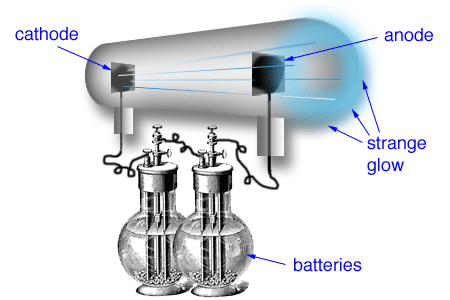

Get an image on the television or computer screen.Apply a higher magnetic field to demonstrate that the curvature can again be increased by increasing the magnetic field strength.Having curved the path of the beam, turn up the energy further and show that the curvature decreases with increasing electron energy.If your CRT does have Helmholtz coils, turn up the current in them until the beam bends.You may need to do this quite slowly if the camera is set to a low frame rate to increase its low light sensitivity. If your CRT doesn’t have Helmholtz coils, simply wave the neodymium magnet near the CRT to show the beam bending.Turn up the energy of the electron beam until the gas inside the globe is clearly glowing.Dim the lights and turn on the camera if you’re using one.If you’ve not got a cathode ray tube, an old CRT TV or computer monitor and a strong magnet will provide a more qualitative version of this demo.

#Experiments with cathode rays led to the discovery of the manual#
The beams of electrons are too dim for anything except a very small audience to see directly, and are something of a challenge for video equipment too! A camera with a night mode, or manual control over gain (or ISO) and shutter speed will probably be necessary. In addition to a cathode ray tube, you’ll probably need a sensitive camera to show your audience the results of this experiment. In the absence of Helmholtz coils, a strong neodymium magnet should suffice to bend the electron beam. The ideal CRT is enclosed by Helmholtz coils to allow a varying magnetic field to be applied. This experiment obviously requires a cathode ray tube filled with gas which glows when electrons hit it.


 0 kommentar(er)
0 kommentar(er)
